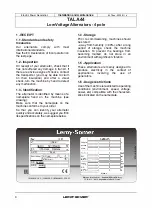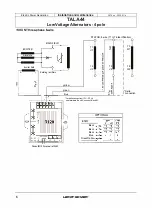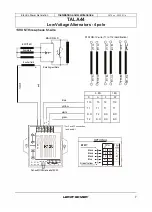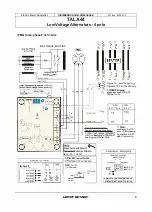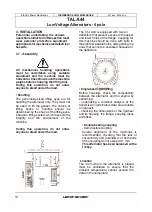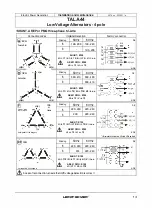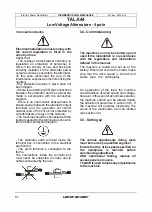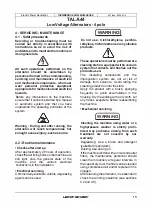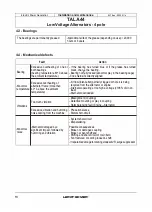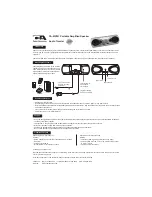
Electric Power Generation
1
Installation and maintenance
1
5876 en - 2020.01 / a
TALA44
Low Voltage Alternators - 4 pole
• Checking the winding
You can check the winding insulation by
performing a high voltage test. ln this case,
you must disconnect all AVR wires.
(WARNING)
conditions is not covered by our
warranty.
• Checking the diode bridge
A diode in good working order should allow
the current to flow only in the anode-to
cathode direction.
0
�
0
Anode •
• Cathode
0
�
-
C
......
'
IN
•W
• Checking the windings and rotating
diodes using separate excitation
During this procedure, make sure that
the alternator is disconnected from any
external load and inspect the terminal
box to check that the connections are
fullytightened.
1) Stop the unit, disconnect and isolate the
AVR wires.
2) There are two ways of creating an
assembly with separate excitation.
Assembly A:
Connect a 12 V battery in
series with a rheostat of approximately
50 ohms - 300 W and a diode on bath exciter
field wires (5+) and (6-).
ASSEMBLY A
6 _ Field
5+
Rh. 50-300W
Assembly B:
Connect a "Variac" variable
power supply and a diode bridge on bath
exciter field wires (5+) and (6-).
Bath these systems should have
characteristics which are compatible with
the field excitation power of the machine
(see the nameplate).
3) Run the unit at its rated speed.
4) Gradually increase the exciter field
current by adjusting the rheostat or the
variac and measure the output voltages on
L 1 - L2 - L3, checking the excitation voltage
and current at no load (see the machine
nameplate or ask for the factory test report).
When the output voltage is at its rated value
and balanced within 1 % for the rated
excitation level, the machine is in good
working order. The fault therefore cornes
tram the AVR or its associated wiring (ie.
sensing, auxiliary windings).
ASSEMBLY B
6-
Field
5+
C)
©
,.f"'
Variac
AC
DC
12V
220V
18
LEROY-SOMER '"

